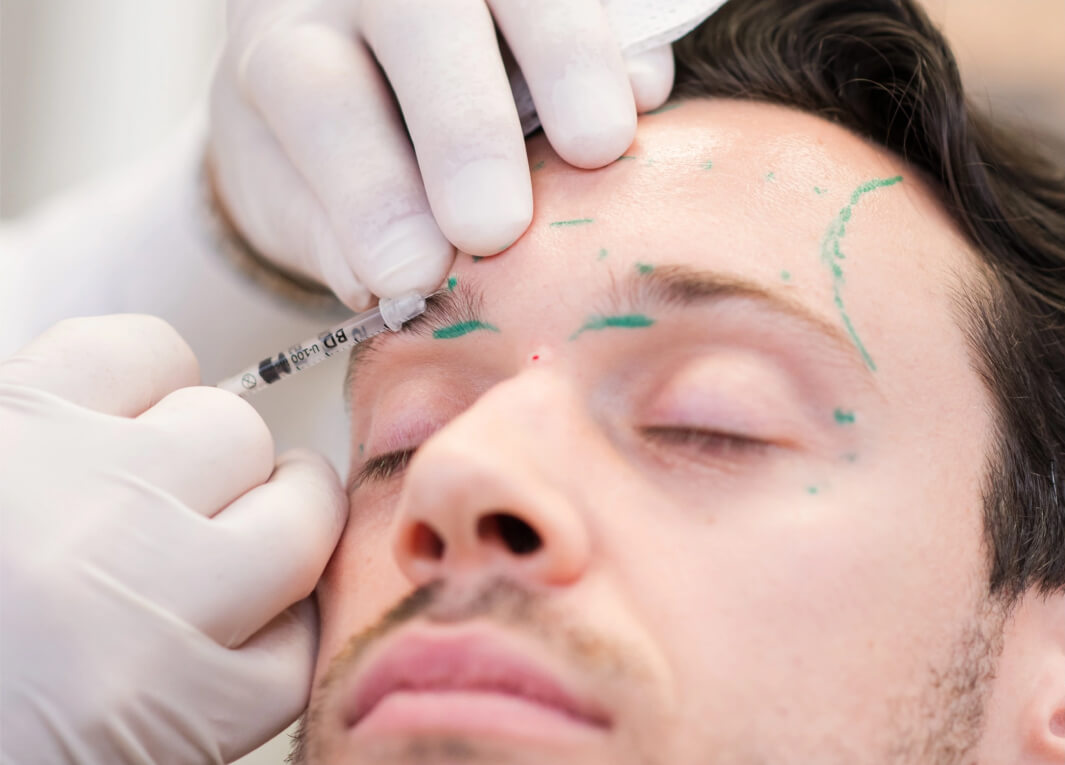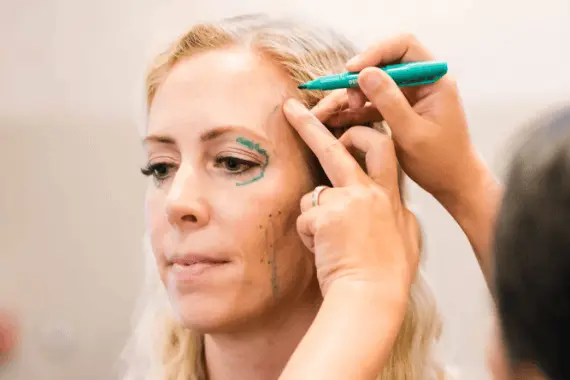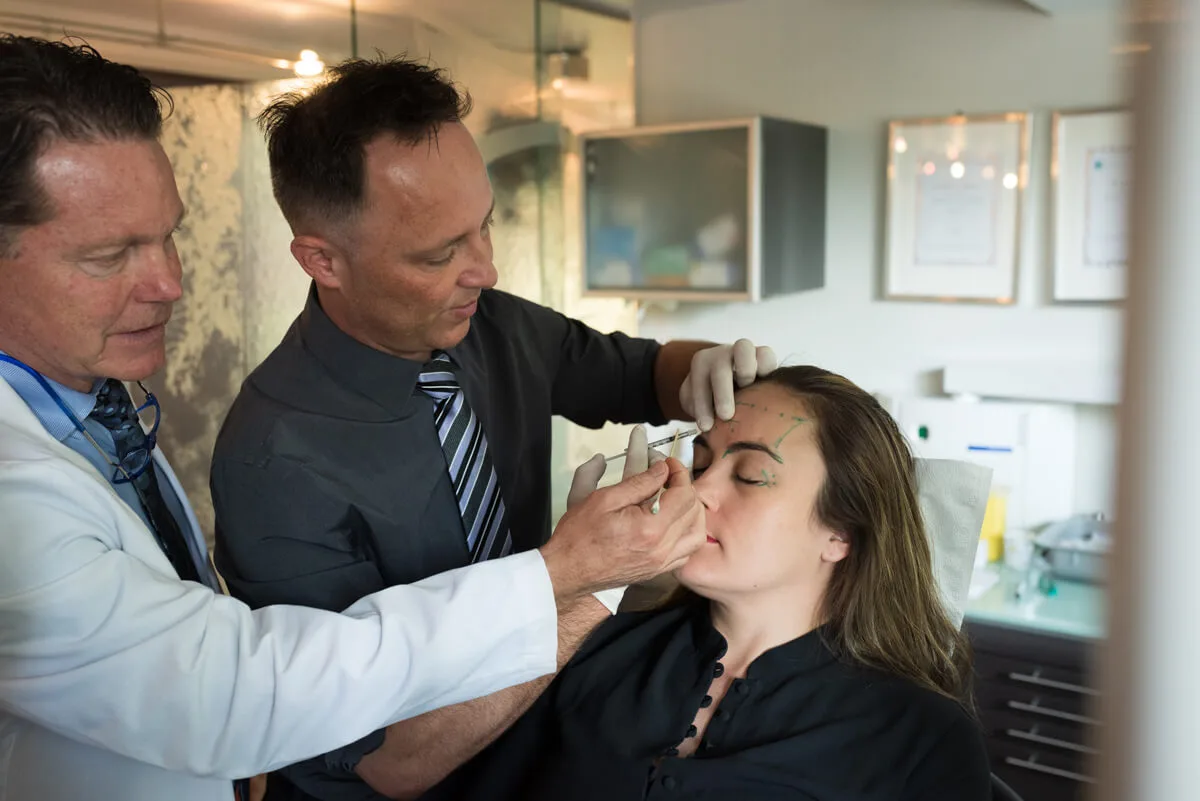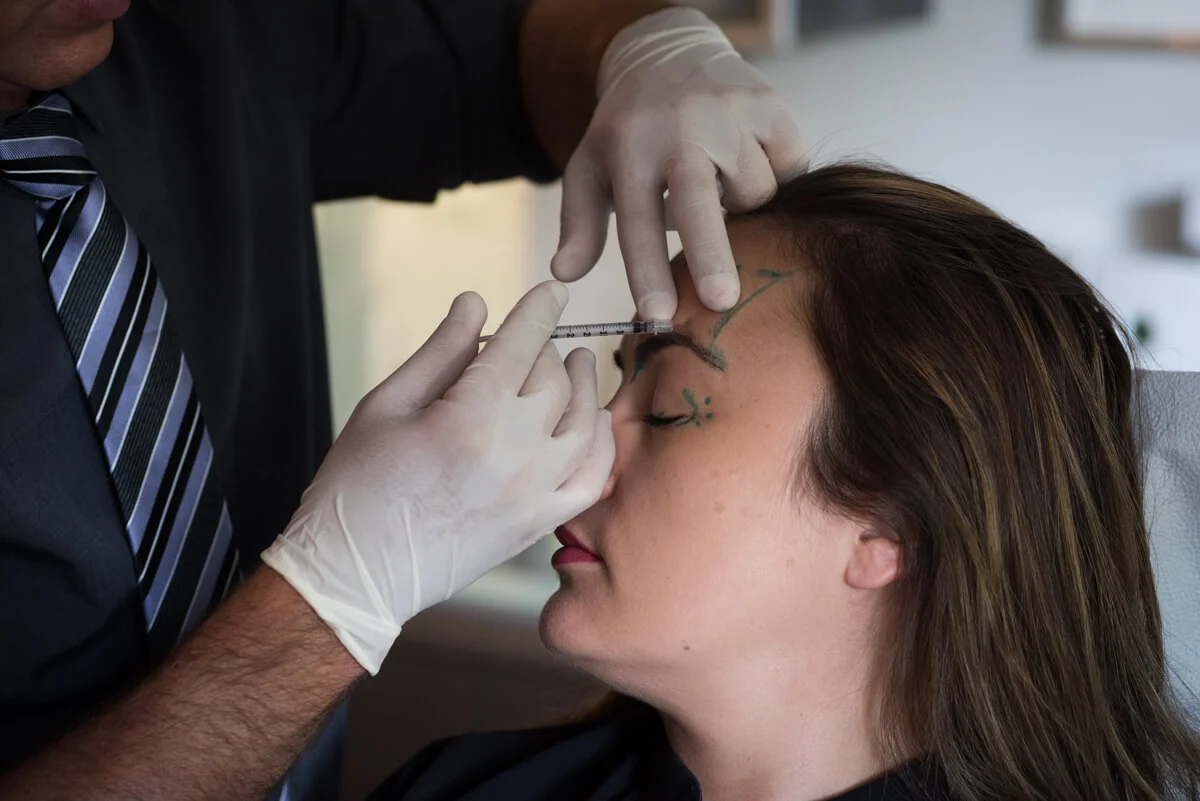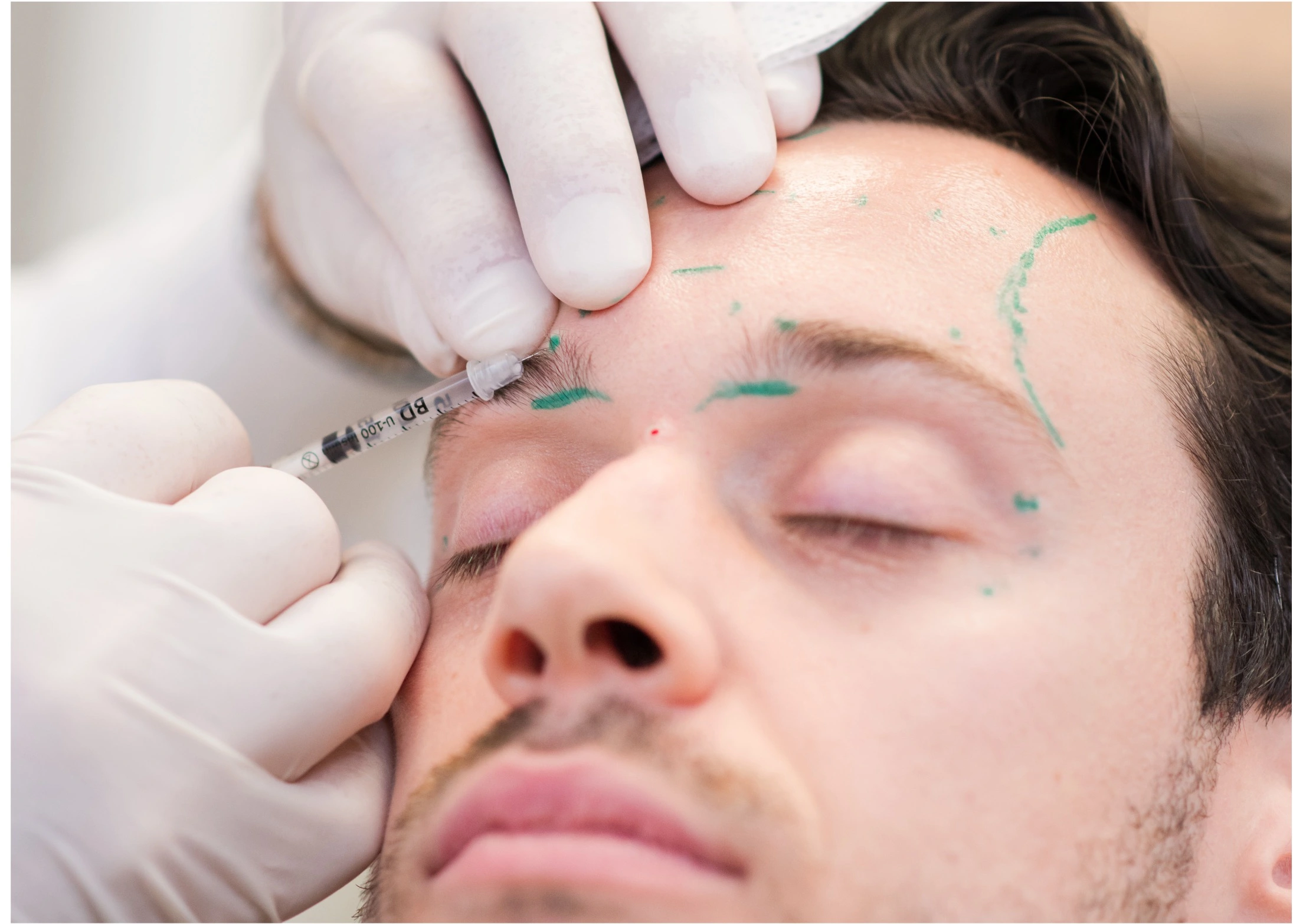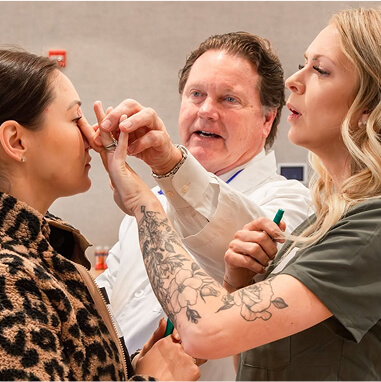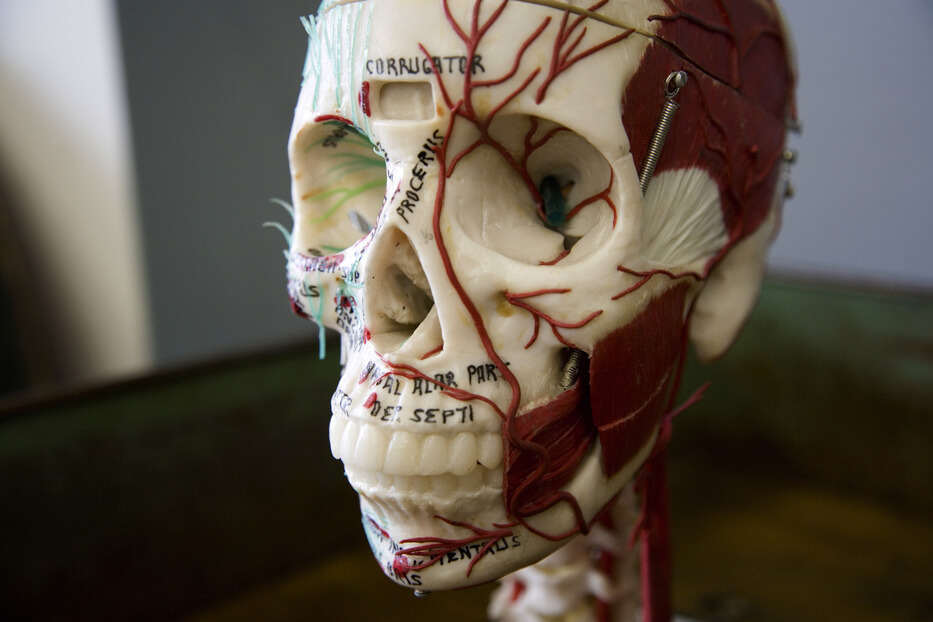What you’ll learn
Learn the PTIFAT Marking Techniques for administering Botox® in the upper face for aesthetics, as well as therapeutically.
Master precise injection protocols using PTIFAT’s proprietary Weal Technique, designed to increase patient comfort & decrease negative side effects.
Gain confidence to confidently administer Botox after injecting 8+patients in a closely supervised & supportive learning environment.
Meet the Clinical Director

Dr. Warren Roberts
Co-founder & Clinical Director
Dr. Warren Roberts is the Co-Founder and Clinical Director for the Pacific Training Institute for Facial Aesthetics and Therapeutics. He is a retired Clinical Professor in the department of Oral Health Sciences at the University of BC
Dr. Warren Roberts is the Co-Founder and Clinical Director for the Pacific Training Institute for Facial Aesthetics and Therapeutics. He is a retired Clinical Professor in the department of Oral Health Sciences at the University of BC
More

Dr. Kimit Rai
Clinical Instructor
Dr. Rai is a graduate of the University of British Columbia and has been B.C. Board Certified in Plastic Surgery since 1975. He has also been American Board Certified in Plastic Surgery since 1977. From 1989 to 1999, Dr. Rai was Chief of Surgery for the Simon Fraser Health Region, as well as the Chief of the Department of Plastic Surgery from 1983 to 1999. Dr. Rai is also the past president of the Canadian Society of Plastic Surgeons and the Northwest Society of Plastic Surgeons
.
Course Details
Experience the industry's most comprehensive clinical Botox® course, featuring more hands-on injection practice than any program. Level 2 transforms your skills through intensive practical experience:
- Perfect your technique by personally injecting 8+ patients under expert supervision
- Master the PTIFAT Aesthetic Marking Template for treatment in the upper face (glabella, frontalis, and orbicularis oculi)
- Master the PTIFAT Therapeutic Marking Template for therapeutic treatment (migraines, headaches and TMD)
- Learn the PTIFAT Weal Technique which eliminates the risk of unwanted Botox migration, increases patient comfort & decreases negative side effects
Graduate with the confidence that comes only from extensive supervised practice, ready to immediately implement both aesthetic and therapeutic Botox® treatments in your practice. This career-changing course bridges the gap between theory and real-world application through our signature hands-on approach.
Limited seats available—secure your place in this high-demand training program today!
Courses in Toronto, ON: Dentists attending the hands-on will be limited to therapeutic-based cases only (masseter & temporalis).
The format of the Level 2 includes an online didactic section (17 hours & exam), followed by a 2-day clinical session (16 hours) held at select clinics in Vancouver, Calgary, Saskatoon, Toronto, Montreal & Halifax.
Your Online Learning Journey
This course offers subtitles available in English, French and Spanish.
6 sections • 123 lectures • 17 total length
Overview
29 min
1.1 - Introduction
36 min
1.2 - Complex Anatomy
37 min
1.3 - Marking Sequence
24 min
1.4 - Injection Sites
27 min
1.5 - Uploading into Facetec
13 min
1.6 - Historical Markings
8 min
1.7 - Recare
12 min
1.8 - History Taking
14 min
1.9 - Treatment Sequence
17 min
Overview
12 min
2.1 - Introduction
21 min
2.2 - Complex Anatomy
16 min
2.3 - Marking Sequence
44 min
2.4 - Injections
10 min
2.5 - Uploading into Facetec
17 min
2.6 - Historical Markings
8 min
2.7 - Recare
26 min
2.8 - History Taking
24 min
2.9 - Treatment Sequence
20 min
Overview
23 min
3.1 - Introduction
39 min
3.2 - Anatomy
23 min
3.3 - Marking Sequence
25 min
3.4 - Injections
7 min
3.5 - Uploading into Facetec
13 min
3.6 - Historical Markings
11 min
3.7 - Recare
11 min
3.8 - History Taking
9 min
3.9 - Treatment Sequence
16 min
Statistics & History of Facial Rejuvenation
1 h 23 min
The Facial Aging Process
43 min
Why Facial Rejuvenation?
2 h 01 min
Treatments Available Today
13 min
Patient Evaluation and Treatment Sequence
23 min
Indications & Contra-Indications For These Techniques
53 min
4.1 - TMD
1 h 38 min
4.2 - Headaches & Chronic Migraines
31 min
4.3 - Parafunctional Habits
37 min
EMG-Guided Therapeutic Demo
59 min
Medical History Form
PDF & Template
Treatment Consent Form
PDF & Template
Post Op Form
PDF & Template
Treatment Record Form
PDF & Template
Photo Relase Form
PDF & Template
How to Register a Patient
2 min
How to Upload Photos
5 min
How to Upload your "After" Photos
2 min
How to Develop a Before & After Gallery
3 min
List of Botox Supplies
Online Study Club
Before & After Albums
Roberts Facial Rejuvenation Photography series (Syllabus)
Graduate Checklist
Billing Codes
Common Treatment Adjustments/Tweaks
Advanced Botox Training
2-Day Clinical Hands-on Session
Day 1: Hands-on Landmarking & Integrative Cadaver Lab
Practitioners will attend an anatomical cadaver integration session. Dr. Roberts provides an in-depth review of relevant anatomy and relates surfaces features to the underlying musculature and bones.
Understanding the source, pathways and overlap of the cranial nerves provides the foundation for understanding myofacial pain and the synergy that exists between aesthetic and therapeutic botulinum toxin therapy.
As Dr. Roberts reviews muscles on the cadaver, practitioners will practice the PTIFAT Anatomic Landmarking Technique on 15+ participants. This integrative portion of the cadaver lab develops confidence prior to the clinical hands-on. The day finishes with a live model demonstration with Dr. Roberts injecting, using the the PTIFAT Anatomic Landmark Template, the PTIFAT Therapeutic & Aesthetic Injection Templates & Techniques.
*Please note, you will be anatomically marking up to 15-20 other practitioners, and those practitioners may be marking you as well. The areas are from the coronal suture to the trapezius to the platysma on the chest (pec major).
Day 2: Clinical Hands-On
Day 2 is an intensive clinical hands-on practicum where you have the opportunity to inject 8+ patient models using the PTIFAT Anatomic Landmark Template, the PTIFAT Therapeutic & Aesthetic Injection Templates & Techniques. The course is typically held at the practice of Drs. Roberts (in Tsawwassen, BC which is ~25 minutes south of Vancouver) or in select clinics in Calgary, Winnipeg, Saskatoon, Toronto, Quebec & Halifax.
The focus of the day is on practical integration of botulinum toxin treatments for both therapeutic and aesthetic indications. Participants gain confidence and clinical competence through real-world experience, applying anatomical knowledge and treatment protocols learned during the lecture portion of the course.
Key Features:
- Supervised Patient Treatment: Each participant will assess and treat 8+ patients, with aesthetic concerns such as frown lines and forehead lines, as well as TMD, bruxism, chronic migraine and headache. View details here.
- Small Group Format: Clinical days are conducted in small groups to ensure a high instructor-to-student ratio (1:5), allowing for personalized feedback and mentorship.
- Treatment Planning & Injection Technique: Emphasis is placed on anatomical landmarks, muscle palpation, dosage planning, safety, and injection technique.
- Real-Time Learning: Instructors provide immediate feedback to help refine your technique and build clinical confidence.
You will have the opportunity to see how a patient is treated from the moment they walk into the clinic, how the necessary medical history and consents are collected on Facetec software, what photographs are required and how they are stored in Facetec, the consultation process, treatment (including markings & injection), billing procedures and booking post-op appointment. Our goal is to provide you with extensive hands-on experience so you are confident leaving and going back to treat patients within your own practice.
What to Expect
Master the Following Treatment Areas in Level 2:

Glabella Complex

Frontalis

Orbicularis Occuli

Migraines & Headaches

Parafunctional Habits

TMD
This Course Is Ideal For

Dentists
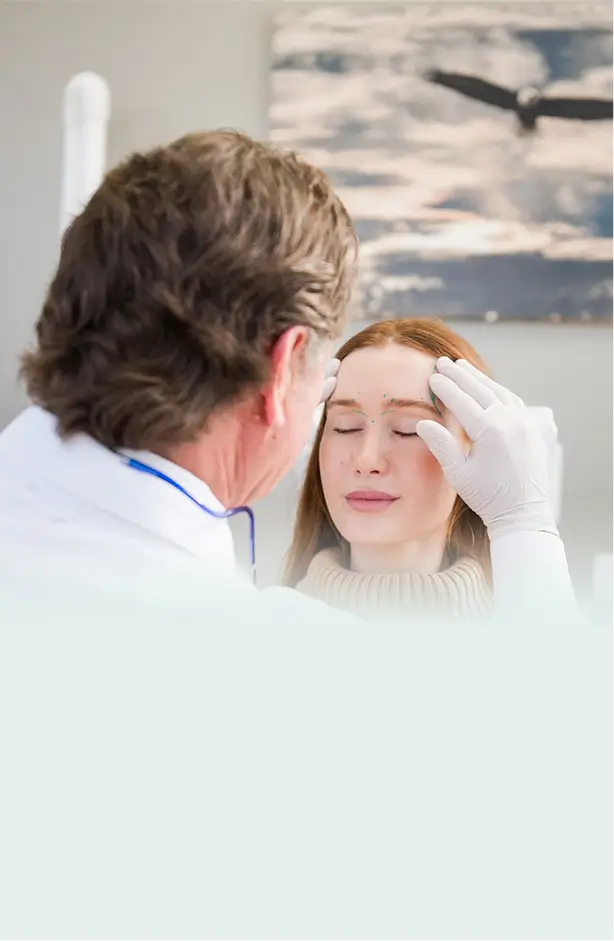
Physicians
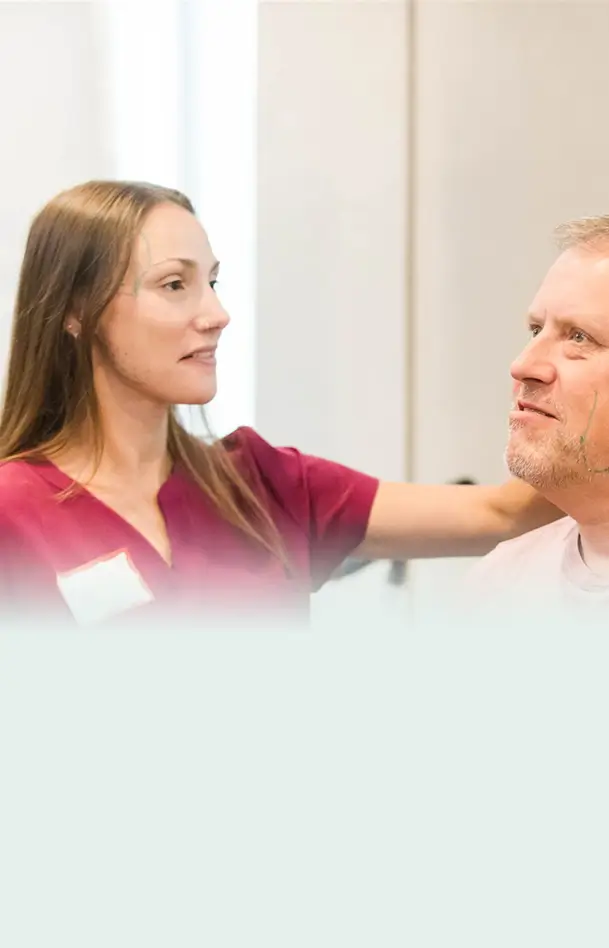
Nurses
Clinical Support Staff Training
We offer a separate Level 2 – Team Training course for non-injector team members, focusing on clinical skills, integration, and marketing, held concurrently with Practitioner’s training.
Fees & Requirements
Practitioner Tuition:
$3,990 CAD (plus GST)
Prerequisite:
Successful completion of Level 1 is required prior to attending the Level 2 hands-on. You may register for Level 1 and Level 2 at the same time.
Requirements:
A minimum of one patient model(s), a current license and malpractice insurance.
Patient Model:
A discounted course rate of $6/unit is charged for each patient model having treatment in the clinic. Practitioners are responsible for their patient model’s fee. View details here.
30%*
Growth in Revenue
* PTIFAT-trained practitioners see a 30% increase in annual revenue within the first year
Before and Afters
The following are typical before-and-after results you can expect to achieve after completing the Level 2 – Basic Botox® training course. All photographs and treatment records are securely stored, managed, and organized using Facetec, a software which supports portfolio development to help build patient trust.
Course’s FAQ
Yes, you can register without providing a patient model, however your hands-on clinical experience will be more limited. Each practitioner is required to provide at least one patient model to maximize injection experience during the clinical session. Without a patient model, you may have less opportunity to practice injecting in our supervised environment. We strongly recommend providing a patient from your practice or serving as a patient model yourself to get the full benefit of the Level 2 training experience.
We typically exceed educational requirements laid out by the colleges and exceed the FETAP standard - the industry's highest standard for patient care. Seven of the ten Canadian provinces have adopted the FETAP Standard of Practice, and we're approved educational provider by the American Dental Association Continuing Education Recognition Program (ADA CERP). For medical practitioners, our training aligns with Continuing Medical Education (CME) requirements. However, recognition varies by jurisdiction and profession, so we recommend checking with your specific regulatory body to confirm acceptance of our training within your scope of practice before registering. For details, click here.
A current license and malpractice insurance is required to take training. Practitioners must check-in with their local licensing body to confirm scope and practice guidelines, prior to registering.
Botulinum toxin (aka Botox/Dysport) is a prescription medication. The ability to prescribe and/or provide prescription medications via injection is required. We recommend that you contact your local regulatory college to confirm scope and practice guidelines.
Still Have a Question?
Reach Out Us
Call Us
CE/CME Recognition & Accreditation
PTIFAT is an ADA CERP recognized provider. ADA CERP is a service of the American Dental Association to assist dental professionals in identifying quality providers with continuing dental education.
ADA CERP does not approve or endorse individual courses or instructors, nor does it imply acceptance of credit hours by boards of dentistry. PTIFAT designates Level 2 for 33 hours of continuing education credits.


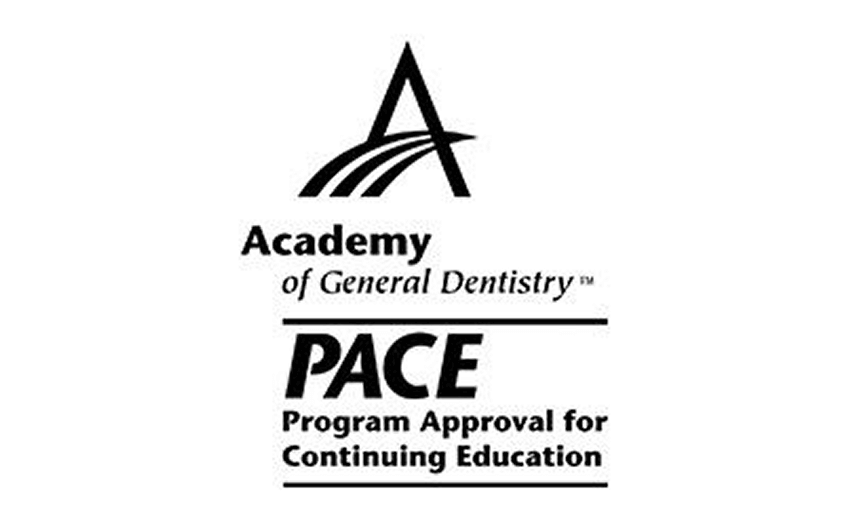
Our graduates success stories
5.0 (250+ Reviews)
+8.000 Graduetes
“I attended this course many years ago, and again last weekend. It was fantastic in the past, and the content has only evolved and improved. I have extensive injecting experience, but I still gained applicable and beneficial new knowledge. For an aspiring injector, or one who has been doing it for years, this course is the North American gold standard, and I would highly recommend it.”
“Dr. Roberts' Botox course is very systematic and thorough. I feel equipped to start administering Botox in my office immediately after the course. Their online resources make it easy to prepare and study for the course ahead of time.”
“Best course I have taken since graduating in 1996.”
“An extremely well organized CE. One of the best hands on courses ever!”
“A great day of learning today. Attention to anatomy/ markings and injection technique is over and above many other courses. Thank you!”
The PTIFAT Training Advantage
Typical Botox Course
Hours of Anatomy
16+ Hours
1-2 Hours
Hours of Hands-on Experience
16 Hours
4 Hours
# of Patient Model Injection
8+
Rarely
Photography Education
Limited
Therapeutic & Aesthetic Applications Both Taught
Practice Integration Taught
Marketing Support
Follow-up Practice Support
Faculty Experience
Canadian Standard of Practice for facial aesthetic therapies
Our training and clinical protocols have set the standard in Canada and exceed all college requirements.
Course Objectives
- Identify and mark precise anatomical facial landmarks for placing Botox® cosmetically in the upper face and for myofascial pain.
- Diagnose and inject botulinum toxin for predictable cosmetic results in the upper face.
- Diagnose and inject botulinum toxin for predictable therapeutic results including myofascial pain (migraine, headache & TMD).
- Provide the PTIFAT Injection Techniques to achieve predictable results and avoid negative side effects.
Registration Policy
We are committed to providing you with an unprecedented educational and clinical experience. Each course has a limited number of seats and includes a high Instructor to student ratio. In order to achieve this, we dedicate a significant amount of resources and make commitments to Faculty members, Instructors, clinical staffing, patients, venues, hotels, etc to ensure the course exceeds your expectations.
As such, your course registration is considered a firm commitment from you.
We have established the following registration policy:
- All payments are non-refundable and non-transferable, including online courses and product orders.
- It is up to each course participant to determine if treatments (ie: botulinum toxin/dermal fillers/etc) are within their scope of practice by checking in with their local provincial regulatory college. Our courses typically exceed the educational requirements laid out by regulatory colleges, however participants are responsible for determining/meeting any provincial/state governing body restrictions and/or requirements.
- Access to online course materials is granted for one year from registration.
- Course date changes for any hands-on courses (including: Level 1B, Level 2, Level 3 and Level 4, Level 5, Level 6, Refresher Course, Microneedling) are not permitted within 30 days prior to the course dates. All funds will be forfeited if the course is not attended. Changes made prior to 30 days before the course date are subject to a $500 rescheduling fee.
- Deposits are non-transferable and are used to reserve a seat for a specific course date. A deposit will be taken at time of registration, with the balance due 30 days prior to the course date.
- PTIFAT reserves the right to cancel, postpone or change any course as required.
- PTIFAT is not responsible for hotel, airfare or other expenses incurred due to course changes/cancellations.
